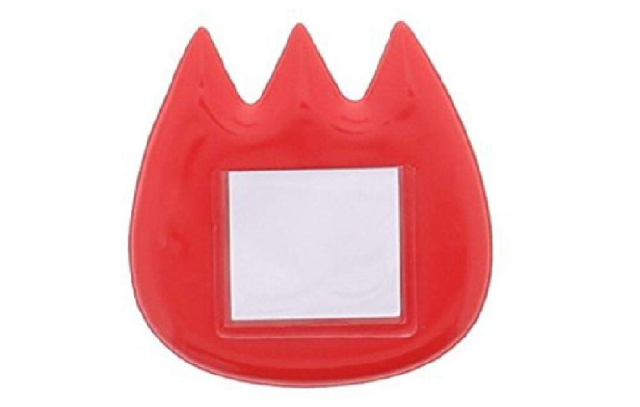
It’s not fire, and it’s not food, but every Japanese person immediately understands the symbol that has the rest of the world scratching their heads.
One of the amazing things about language is how it entirely changes the way you interpret visual symbols. For example, to anyone who reads Japanese, ッ is just how you write the sound “tsu,” but to many people overseas, it looks more like a pair of eyes and an extra-large smile/smirk.
But while switching over to actual, intentional illustrations eliminates the language barrier, it doesn’t erase cultural differences, which brings us to this.
If you’ve dug deep into the emoji options on your smartphone or other device, you might have come across this symbol and wondered just what it’s supposed to be. You could argue it looks sort of like someone ignored a “do not enter” road sign and smashed the top portion of it by ramming it with their car, but the most common interpretation among English-speaking Internet users seems to be that it’s a picture of a block of tofu in the middle of a roaring fire.
Much like the word emoji itself, the 📛 emoji has its roots in Japan. However, flambéed tofu isn’t a traditional Japanese dish, and the symbol actually represents something entirely different. It’s a drawing of a tulip-shaped nafuda, or name badge, like the ones commonly worn by Japanese preschoolers, with a white space in which to write the child’s name. So no, 📛 isn’t a burning tofu picture used when you’re hungry but going vegetarian for the day. It’s used when you’re talking about preschools, your young kids, and other early childhood topics.
▼ Though the one most frequently seen in emoji sets is fire-red, the badges can actually be purchased in all sorts of different colors.
Name badge 📛 (not tofu on fire) pic.twitter.com/IOCpyP6QiB
— Mariko Kosaka (@kosamari) April 1, 2017
Okay, so that covers the “what,” but what about the “why?” That’s a little trickier, as even in Japan, no one seems to be quite sure why tulips are so strongly associated with preschools, aside from the simple fact that they look cute. Some theorize it’s because tulips are fast-growing flowers, making them an auspicious symbol for kids taking the first steps of their academic and social lives, while others think the reason might have something to do with the “Tulip Song,” a popular nursery school singalong in Japan.
▼ Performed here by two singers wearing stylized versions of the standard Japanese preschool smock, but, ironically, not wearing tulip name badges.
▼ Making tulip name badge origami is also a quick and easy arts and crafts project.
チューリップはまった。
— S e r i n a . (@serish11) July 1, 2015
明日の折り紙テストやり方見んでも出来そう。ってくらい折った。楽しい。 pic.twitter.com/lsZ6lbSJ3u
Tulip-shaped badges may be the first ones that spring to mind for many Japanese people, but not every preschool in the country uses them. Some, for example, have the kids wear badges that look like sunflowers or cherry blossoms, like the one below.
Flower-shaped name badges can easily be found in Japanese craft and discount stores, and are also sold online through Amazon Japan (the tulip and sakura versions above sell for 270 yen [US$2.40] and 90 yen, respectively). Oh, and if your PC or device supports Japanese text input, you can also conjure one up by typing “nafuda” then cycling through the rendering choices.
Because really, Japanese word processing programs are absolutely filled with cool artwork.
Sources: Twitter/@nijieith via Hachima Kiko, Hatena
Top image: Amazon Japan/ベルハウス
Insert images: SoraNews24, Amazon Japan/栄プラスチック, SoraNews24
Follow Casey on Twitter, where he’s currently digesting a lunch of mabo tofu.


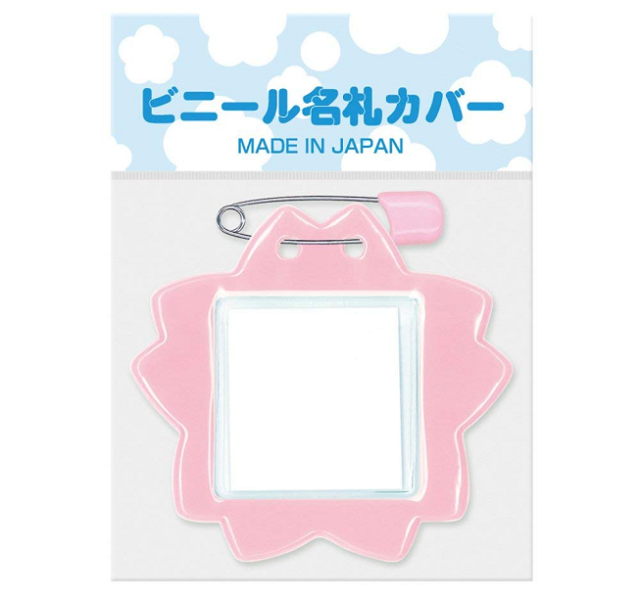
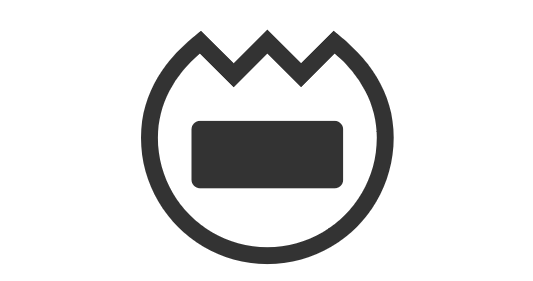
 For the not-so-low cost of US$1,300 you can own almost every Pretty Cure collector’s badge set
For the not-so-low cost of US$1,300 you can own almost every Pretty Cure collector’s badge set Japan’s anti-train groper badge design contest announces this year’s winners
Japan’s anti-train groper badge design contest announces this year’s winners Japan’s 10 favorite emoji for Twitter, and how they compare to the rest of the world
Japan’s 10 favorite emoji for Twitter, and how they compare to the rest of the world Japanese city cuts 800,000 tulips after people refuse to stay away despite coronavirus risks
Japanese city cuts 800,000 tulips after people refuse to stay away despite coronavirus risks Japanese company uses video game-style hit point badges to help employees know who needs a hand
Japanese company uses video game-style hit point badges to help employees know who needs a hand Hello Kitty, My Melody sukajan jackets combine symbols of Japan traditional, old-school, and cute
Hello Kitty, My Melody sukajan jackets combine symbols of Japan traditional, old-school, and cute 71-year-old Japanese man who “wanted to look cool” robbed 63 houses, treated strangers to sushi
71-year-old Japanese man who “wanted to look cool” robbed 63 houses, treated strangers to sushi 7-Eleven pancakes become a hit with American tourists in Japan
7-Eleven pancakes become a hit with American tourists in Japan Disney brings some cherry blossom magic to its spring merchandise in Japan
Disney brings some cherry blossom magic to its spring merchandise in Japan Sexy AI-generated Evangelion, Yu-Gi-Oh art sales lead to copyright infringement charges in Japan
Sexy AI-generated Evangelion, Yu-Gi-Oh art sales lead to copyright infringement charges in Japan Cherry blossoms blooming on new sakura Air Jordans from Nike【Photos】
Cherry blossoms blooming on new sakura Air Jordans from Nike【Photos】 Ghibli Park announces new ticket system, adds flexibility and low-priced options
Ghibli Park announces new ticket system, adds flexibility and low-priced options New instant noodles taste like that bland spaghetti they stick under hamburger in bentos
New instant noodles taste like that bland spaghetti they stick under hamburger in bentos Pokémon lid becomes Japan’s most overprotected manhole cover, melts hearts across the country
Pokémon lid becomes Japan’s most overprotected manhole cover, melts hearts across the country Netflix announces new My Melody/Kuromi Sanrio stop-motion series【Video】
Netflix announces new My Melody/Kuromi Sanrio stop-motion series【Video】 New Sanrio Little Twin Stars Kiki and Lala McDonald’s Happy Meal items are adorable and practical
New Sanrio Little Twin Stars Kiki and Lala McDonald’s Happy Meal items are adorable and practical Japanese Railway Lost Property Market: A treasure trove of lost items from trains
Japanese Railway Lost Property Market: A treasure trove of lost items from trains The Square Enix Cafe in Tokyo is closing down for good
The Square Enix Cafe in Tokyo is closing down for good Studio Ghibli adds Spirited Away Bonsai Water Garden to merchandise collection in Japan
Studio Ghibli adds Spirited Away Bonsai Water Garden to merchandise collection in Japan Put it on and look like Donkey Kong! Nintendo releases DK jackets, more for new merch line【Pics】
Put it on and look like Donkey Kong! Nintendo releases DK jackets, more for new merch line【Pics】 Pikachu is recharging as Pokémon and Uniqlo unveil adorable new Pokémon Sketch T-shirt line【Pics】
Pikachu is recharging as Pokémon and Uniqlo unveil adorable new Pokémon Sketch T-shirt line【Pics】 Shibuya’s other famous meeting spot statue has lost its home as part of redevelopment【Photos】
Shibuya’s other famous meeting spot statue has lost its home as part of redevelopment【Photos】 Japan’s deadliest food claims more victims, but why do people keep eating it for New Year’s?
Japan’s deadliest food claims more victims, but why do people keep eating it for New Year’s? The top 10 annoying foreign tourist behaviors on trains, as chosen by Japanese people【Survey】
The top 10 annoying foreign tourist behaviors on trains, as chosen by Japanese people【Survey】 Anime Industry Report shows overseas anime market is bigger than Japanese one, but is this a cultural tipping point?
Anime Industry Report shows overseas anime market is bigger than Japanese one, but is this a cultural tipping point? Hayao Miyazaki says Happy New Year to Studio Ghibli fans with new art for Year of the Snake
Hayao Miyazaki says Happy New Year to Studio Ghibli fans with new art for Year of the Snake The My Melody ♡ Kuromi Anniversary Party is in full kawaii swing at the Ikebukuro Parco store
The My Melody ♡ Kuromi Anniversary Party is in full kawaii swing at the Ikebukuro Parco store McDonald’s Japan has a fukubukuro lucky bag that everyone wants to get their hands on
McDonald’s Japan has a fukubukuro lucky bag that everyone wants to get their hands on Sanrio pancakes celebrate My Melody’s birthday, and Cinnamoroll too, at Japanese cafes
Sanrio pancakes celebrate My Melody’s birthday, and Cinnamoroll too, at Japanese cafes What’s in Starbucks Japan’s fukubukuro lucky bag for 2025?
What’s in Starbucks Japan’s fukubukuro lucky bag for 2025?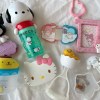 McDonald’s new Happy Meals offer up cute and practical Sanrio lifestyle goods
McDonald’s new Happy Meals offer up cute and practical Sanrio lifestyle goods Foreign tourists on Shinkansen bullet train break suitcase etiquette, angering local passengers
Foreign tourists on Shinkansen bullet train break suitcase etiquette, angering local passengers Possessing Harry Potter’s Sword of Godric Gryffindor is now illegal in Japan
Possessing Harry Potter’s Sword of Godric Gryffindor is now illegal in Japan [Deleted] Article written for April Fool’s Day 2018
[Deleted] Article written for April Fool’s Day 2018 Japanese government to make first change to romanization spelling rules since the 1950s
Japanese government to make first change to romanization spelling rules since the 1950s Foreigner’s request for help in Tokyo makes us sad for the state of society
Foreigner’s request for help in Tokyo makes us sad for the state of society Japanese convenience store Family Mart announces abolishment of eat-in spaces
Japanese convenience store Family Mart announces abolishment of eat-in spaces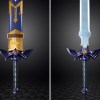 Life-size vibrating Legend of Zelda Master Sword for sale from Nintendo【Photos】
Life-size vibrating Legend of Zelda Master Sword for sale from Nintendo【Photos】 Studio Ghibli releases free-download board game — Here’s how to play it without reading Japanese
Studio Ghibli releases free-download board game — Here’s how to play it without reading Japanese Japan would like to remind you that “emoji” has nothing to do with “emotion”
Japan would like to remind you that “emoji” has nothing to do with “emotion” Distressed moms and dads on Japanese trains getting help from child assistance volunteer badges
Distressed moms and dads on Japanese trains getting help from child assistance volunteer badges Cardcaptor Sakura gets a special limited-time Twitter emoji to celebrate cherry blossom season
Cardcaptor Sakura gets a special limited-time Twitter emoji to celebrate cherry blossom season Stay home in style with Kyoto-easy hakama-inspired roomwear for men, women, and kids【Photos】
Stay home in style with Kyoto-easy hakama-inspired roomwear for men, women, and kids【Photos】 Poo emoji hand signals go viral on Japanese Twitter
Poo emoji hand signals go viral on Japanese Twitter Taiwanese artist’s pencil tip sculptures are miniature masterpieces 【Pics】
Taiwanese artist’s pencil tip sculptures are miniature masterpieces 【Pics】 Koka City’s municipal workers transform yet again into ninja for Ninja Day【Video】
Koka City’s municipal workers transform yet again into ninja for Ninja Day【Video】 Japanese survey finds top 10 emoji that “make you look like an old man”
Japanese survey finds top 10 emoji that “make you look like an old man” Newest Japanese Twitter craze has users guessing movies using only emoji as hints
Newest Japanese Twitter craze has users guessing movies using only emoji as hints Japanese woman wants office romance but has no job, figures out how to make her dream come true
Japanese woman wants office romance but has no job, figures out how to make her dream come true What’s inside the Disney Store’s 10,000-yen Lucky Box? This year, actually useful items!
What’s inside the Disney Store’s 10,000-yen Lucky Box? This year, actually useful items! Complaints lead to talks about whether noise from schools should be regulated
Complaints lead to talks about whether noise from schools should be regulated Tokyo Comic-Con reverses policy, will allow male cosplayers to dress as female characters
Tokyo Comic-Con reverses policy, will allow male cosplayers to dress as female characters Show off your badge collection and plushies in this wacky customisable sweater from Japan
Show off your badge collection and plushies in this wacky customisable sweater from Japan Bring the beach to your room this summer with these cute new “fan accessories”
Bring the beach to your room this summer with these cute new “fan accessories”
Leave a Reply